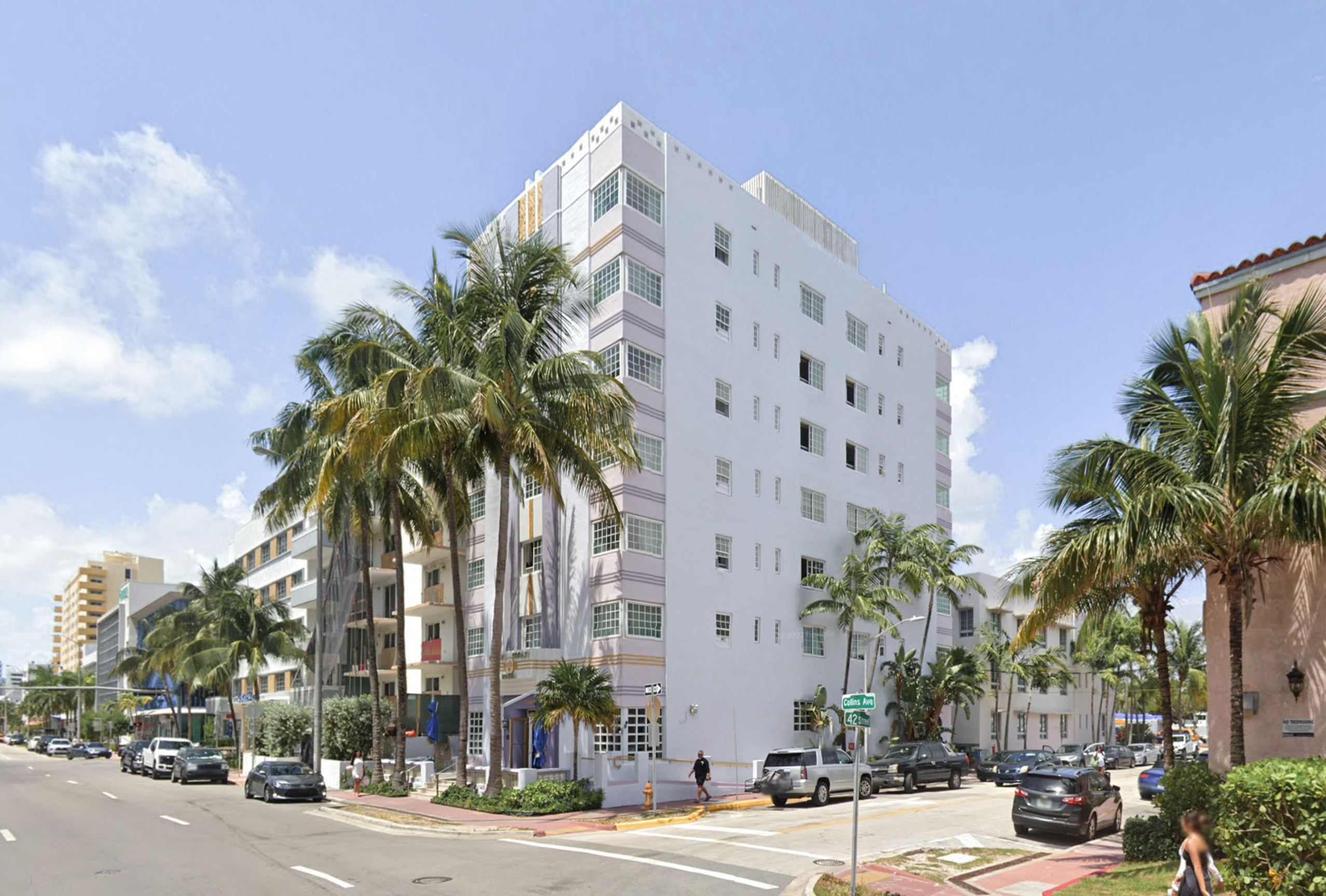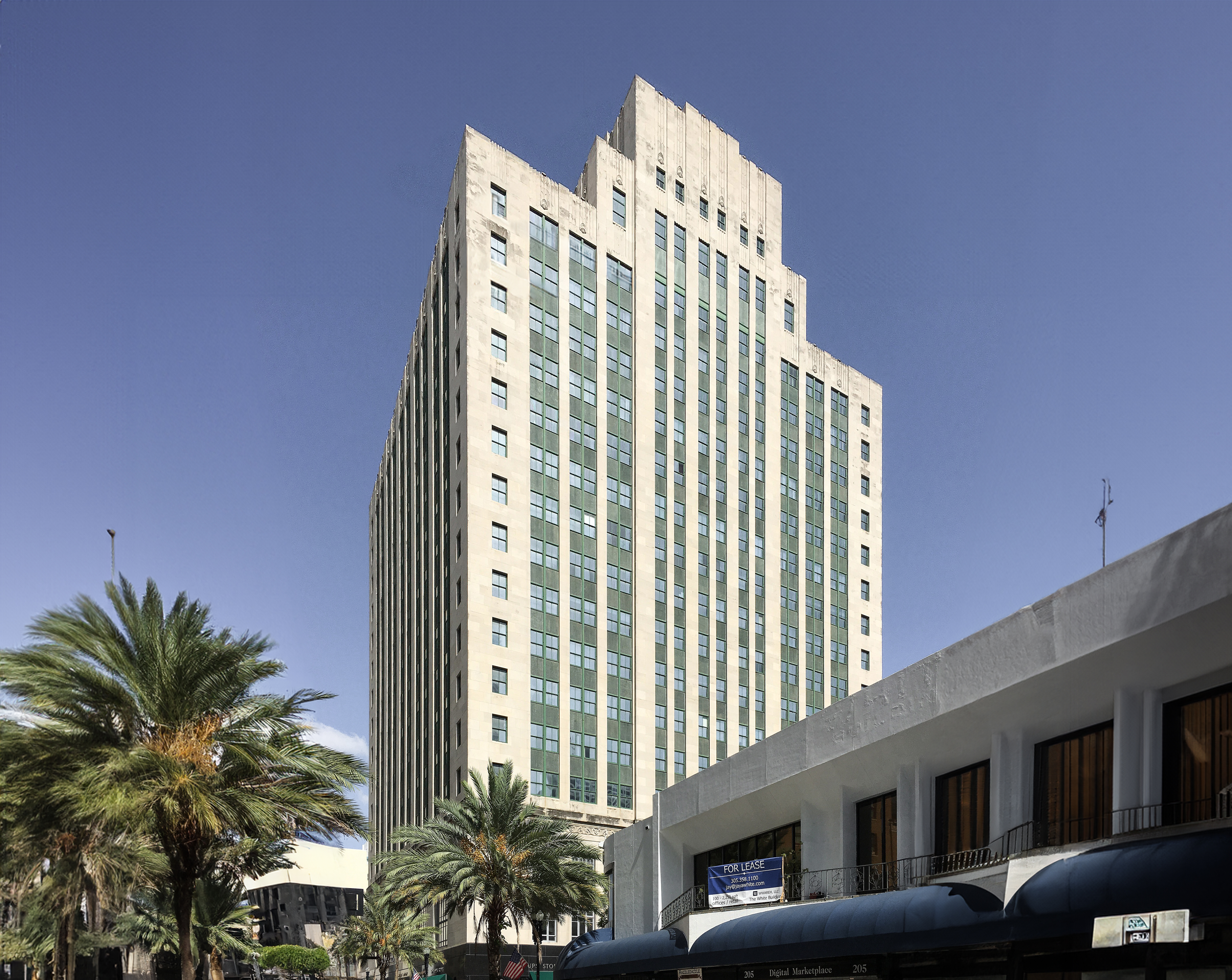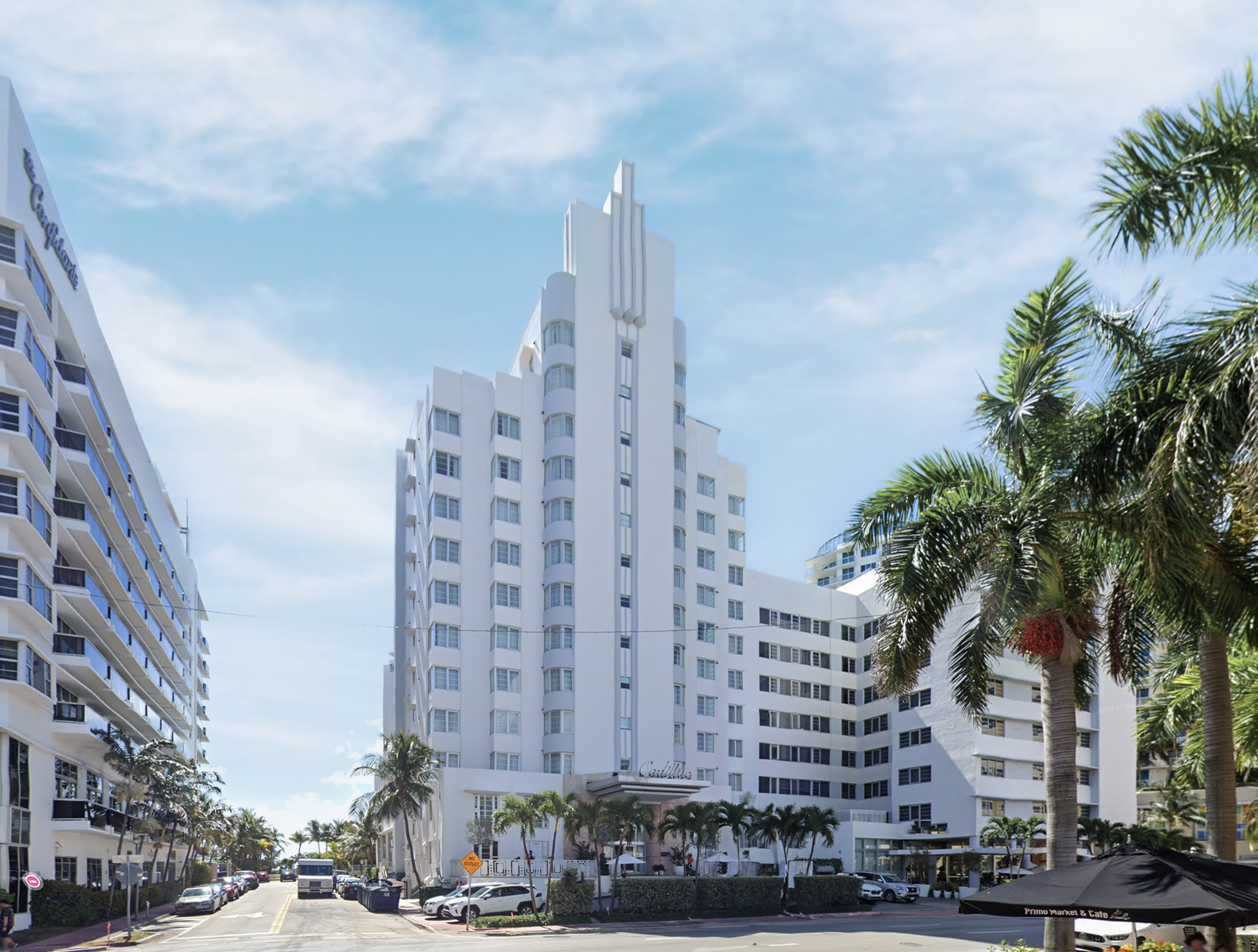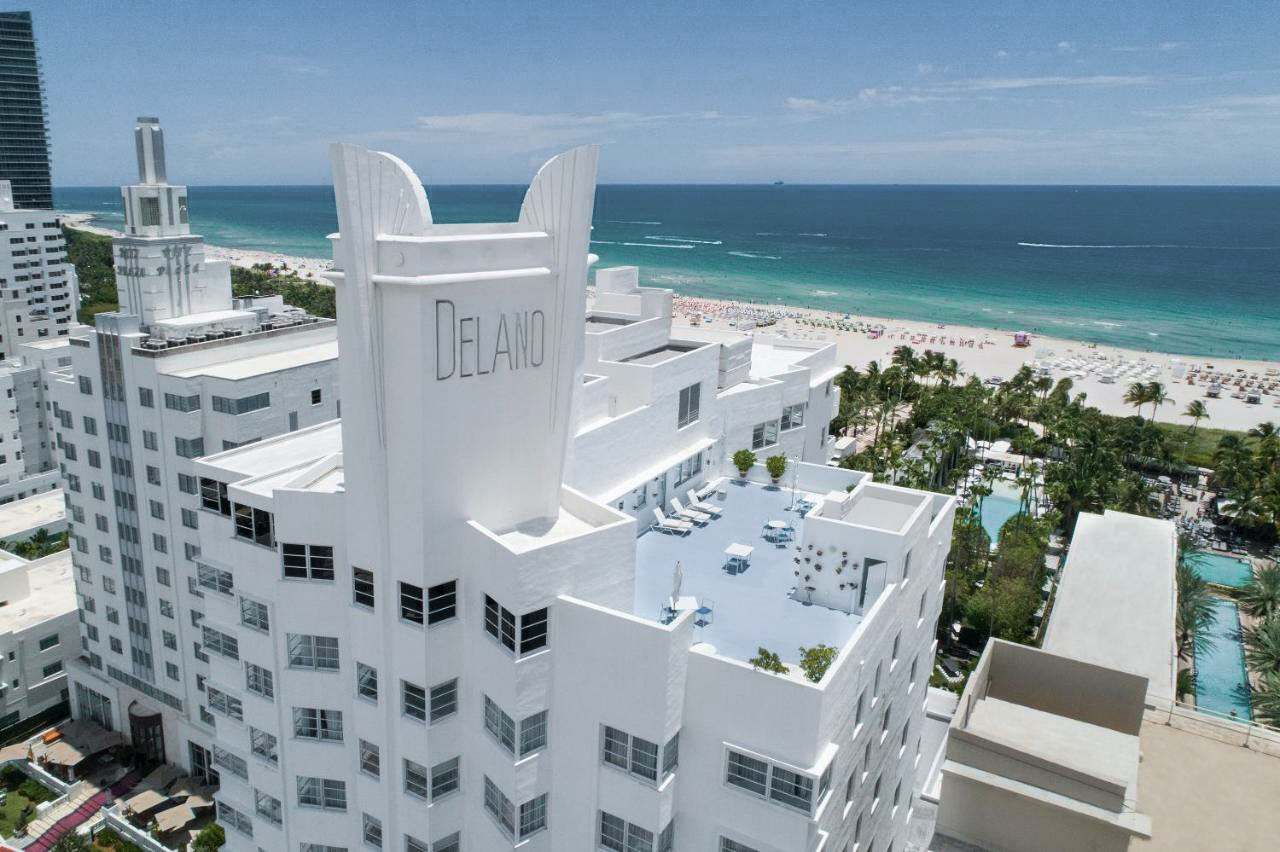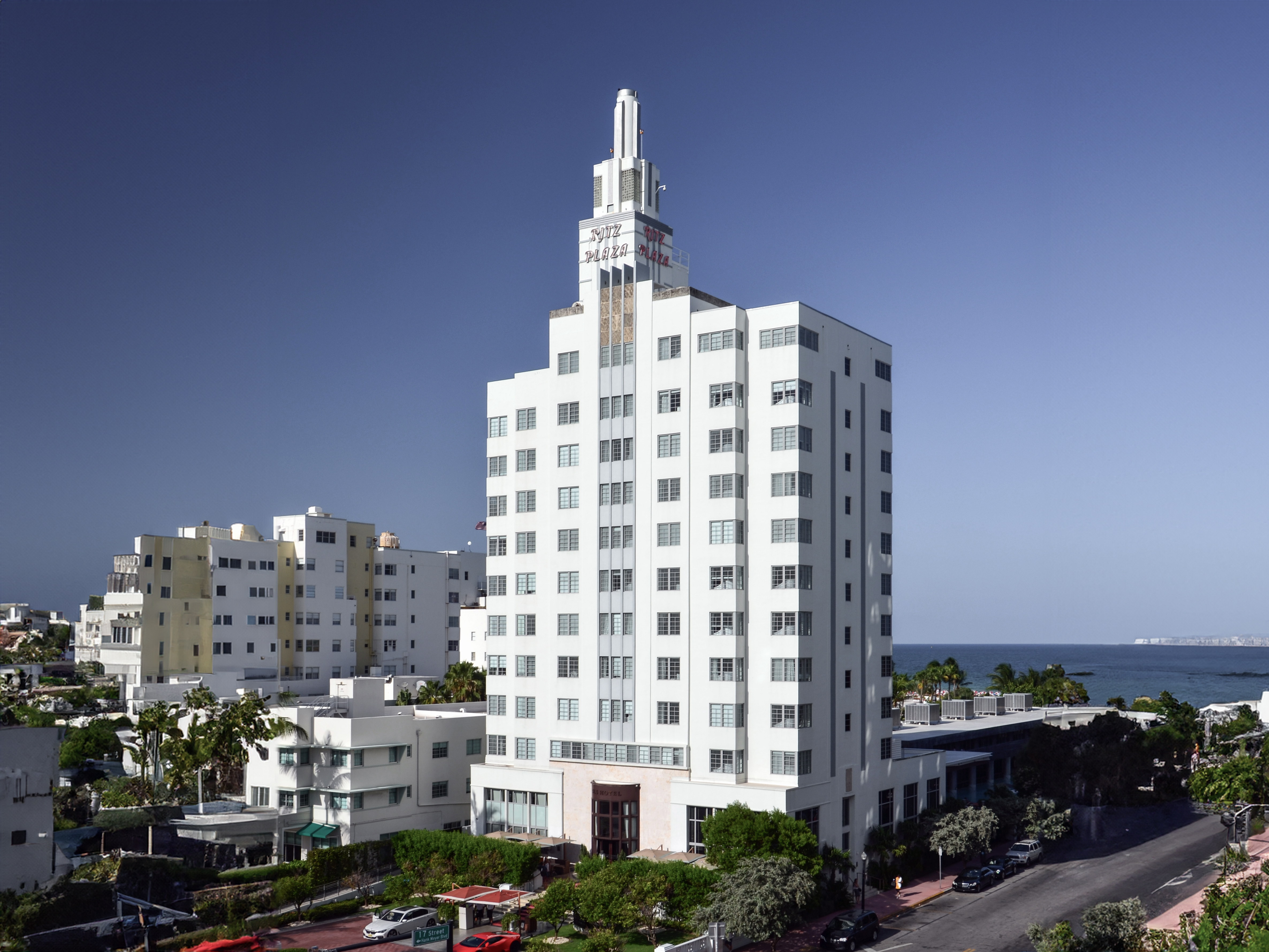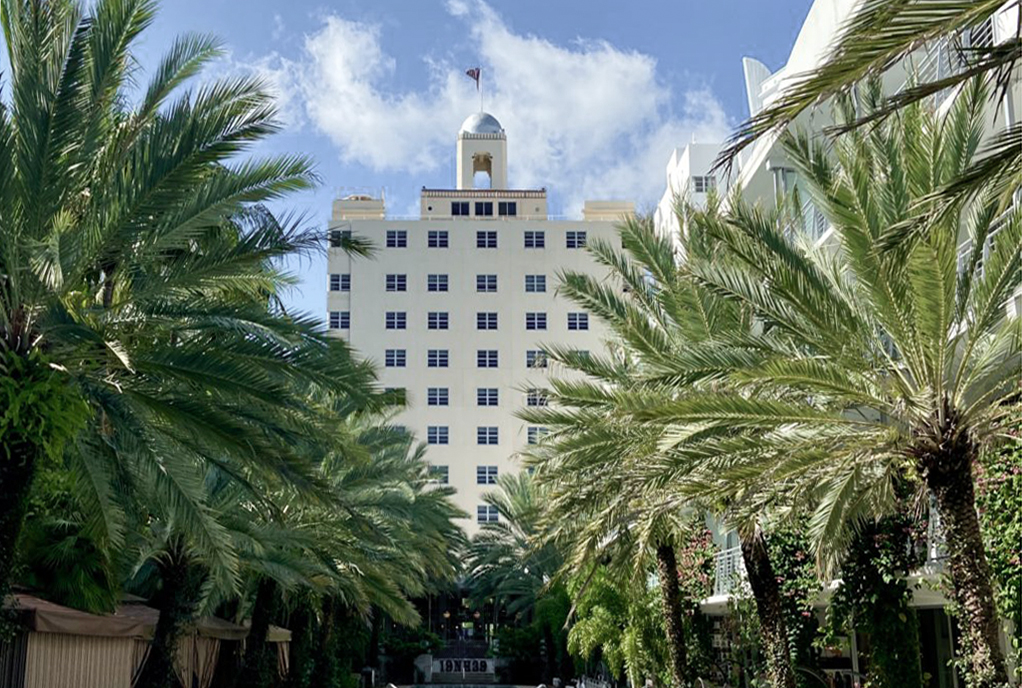The Ocean Spray Hotel is an Art-deco skyscraper designed by M.L.Hampton Associates, and built in 1936 in Miami, FL.
Ocean Spray Hotel is not the only name you might know this building by though. It is common for companies to want to attach their names to iconic buildings when they move in, or for the general public to come up with nicknames, and this one is no exception. The building has changed names several times over the years, and is also known as:
- Carol Arms Hotel between 1936 and 1939.
- Ocean Spay Hotel from 1939 until this day.
Its precise street address is 4130 Collins Avenue, Miami, FL. You can also find it on the map here.
The Ocean Spray Hotel is a structure of significant importance both for the city of Miami and the United States as a nation. The building embodies the distinctive characteristic features of the time in which it was built and the Art Deco style. Because of that, the Ocean Spray Hotel was officially included in the National Register of Historic Places on April 22nd 2004.
At the time of its completion in 1936 the Ocean Spray Hotel incorporated solutions that were quite advanced at the time, these included rooms with private bathrooms and gas heating in each room, unusual details in a hotel for middle-class clients during the 1920-30s.
